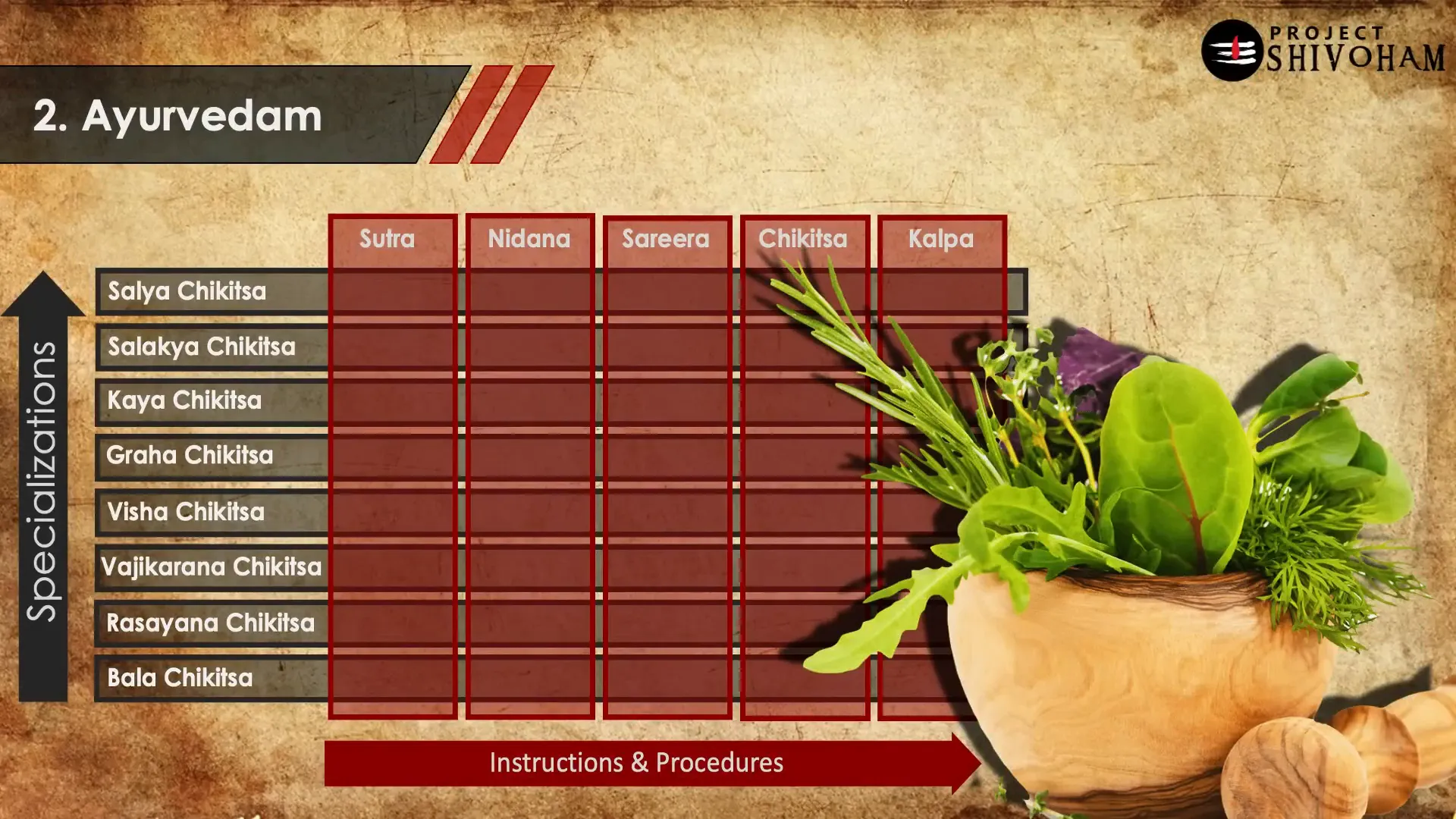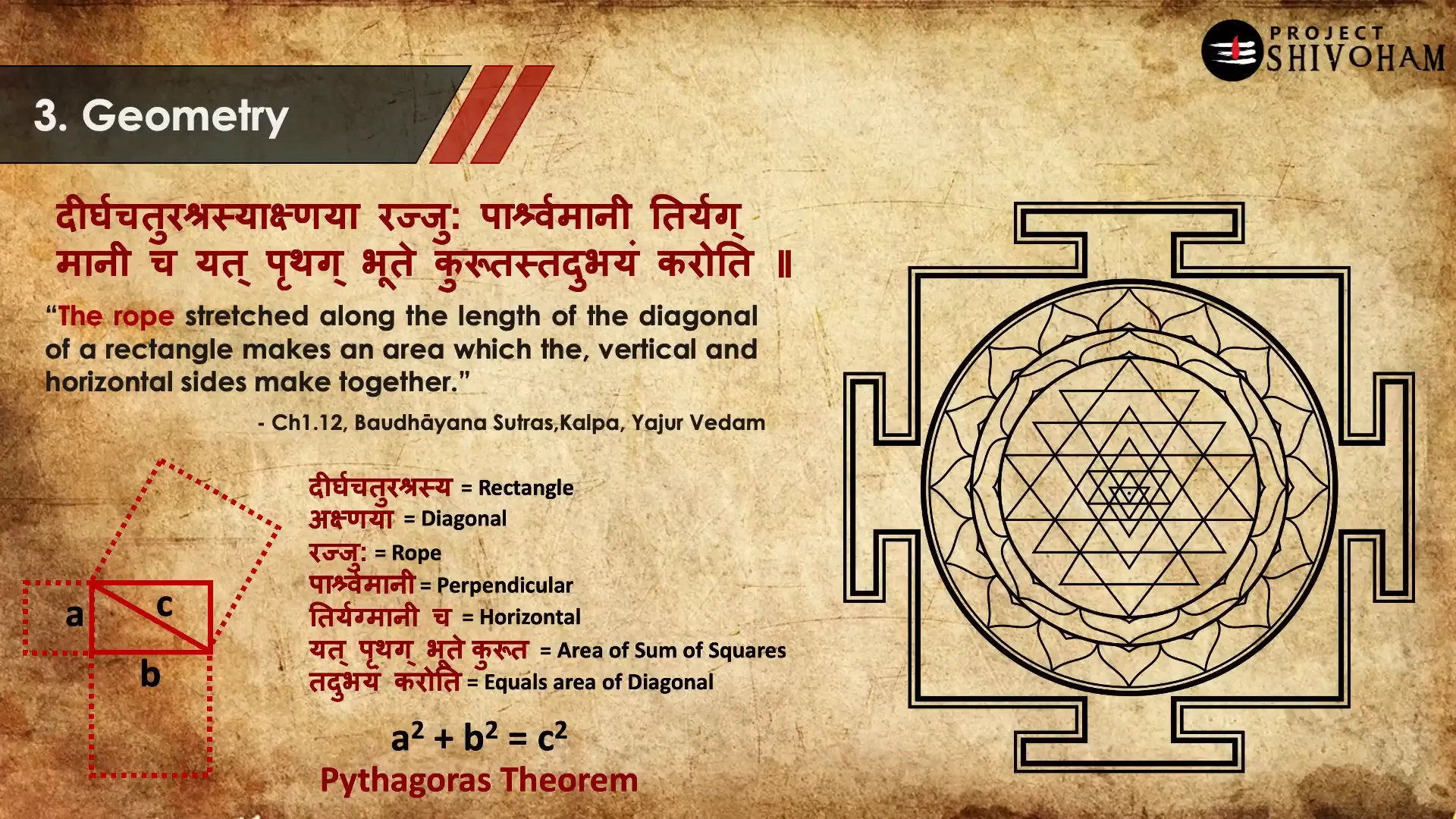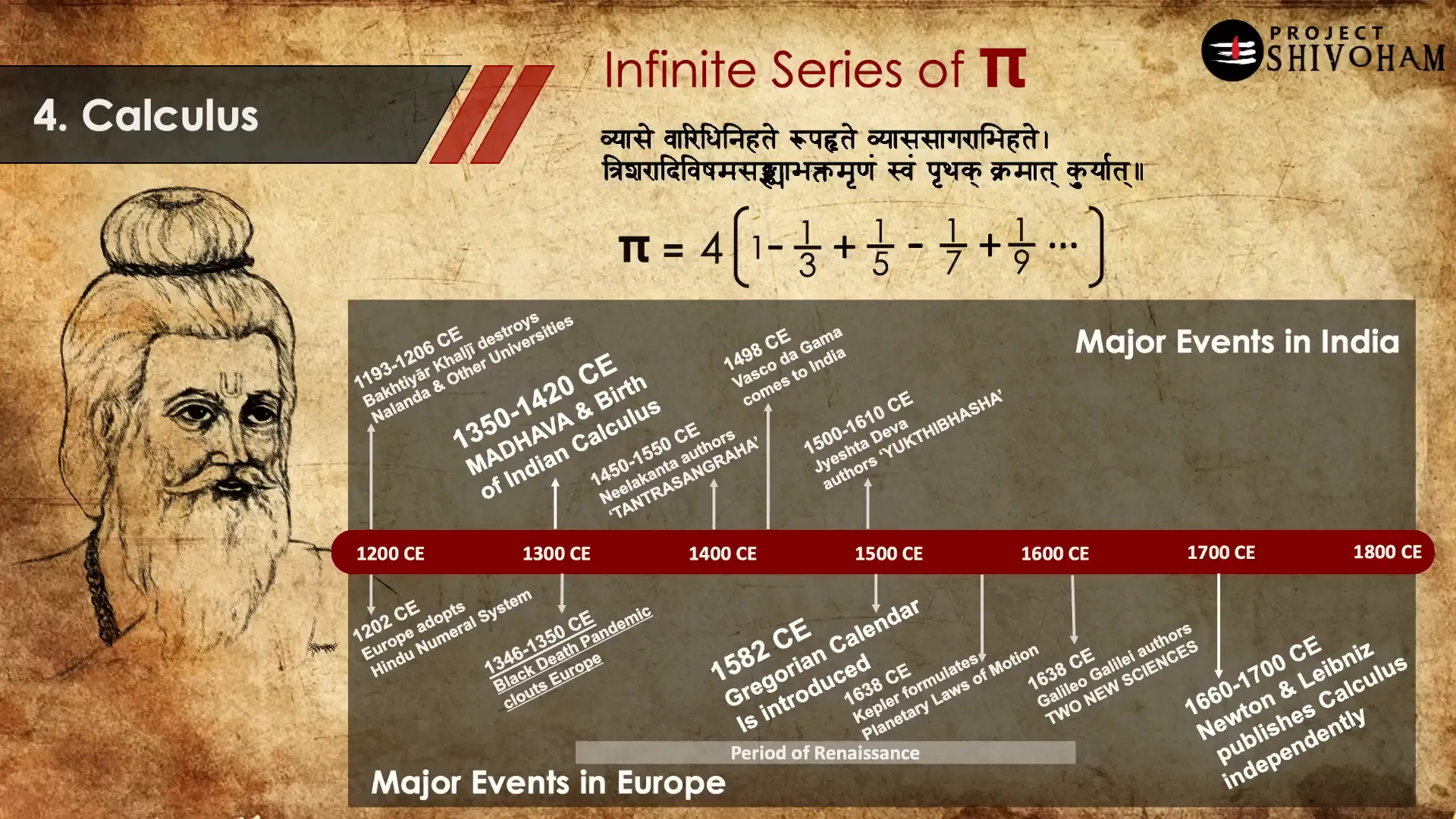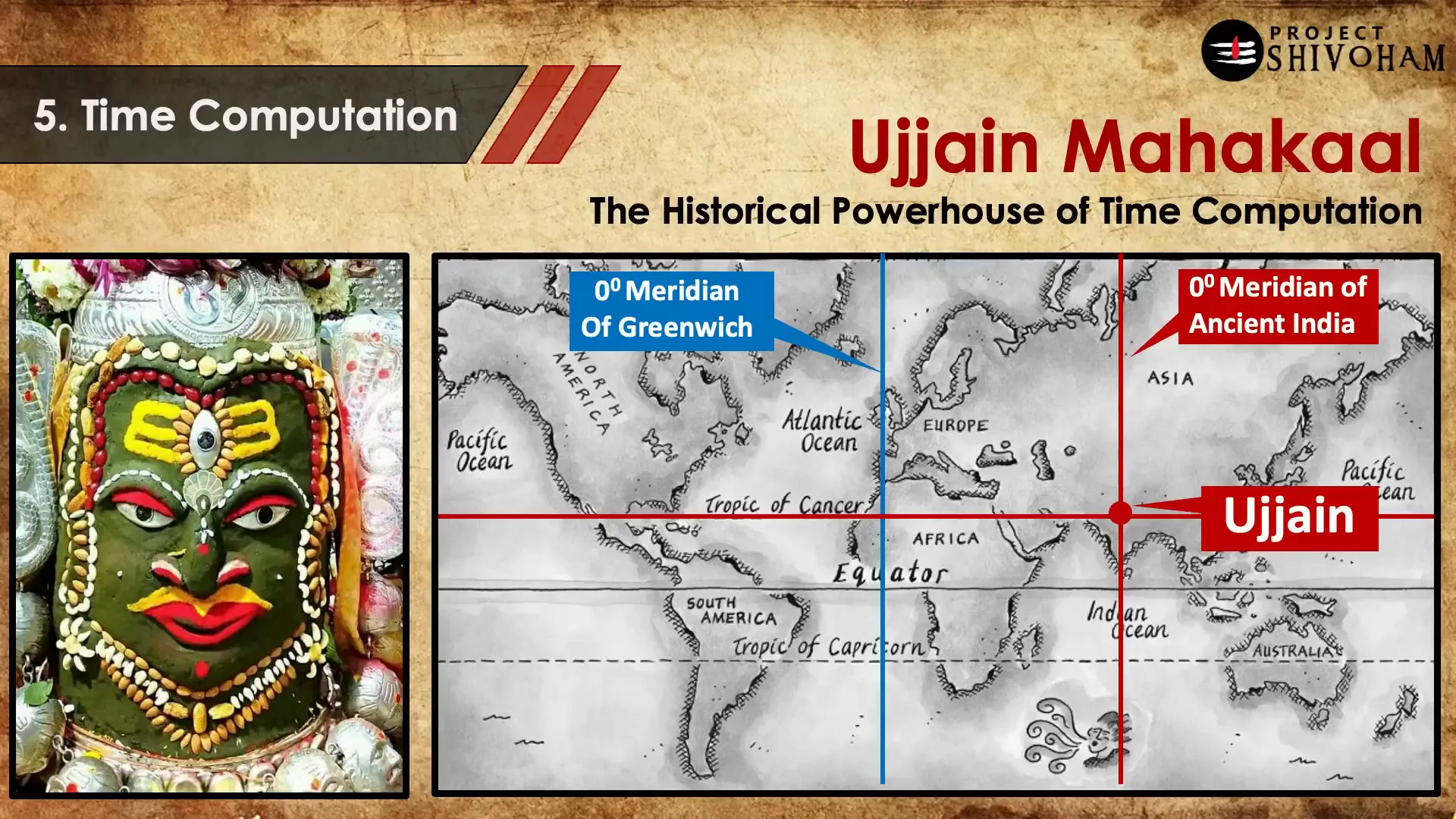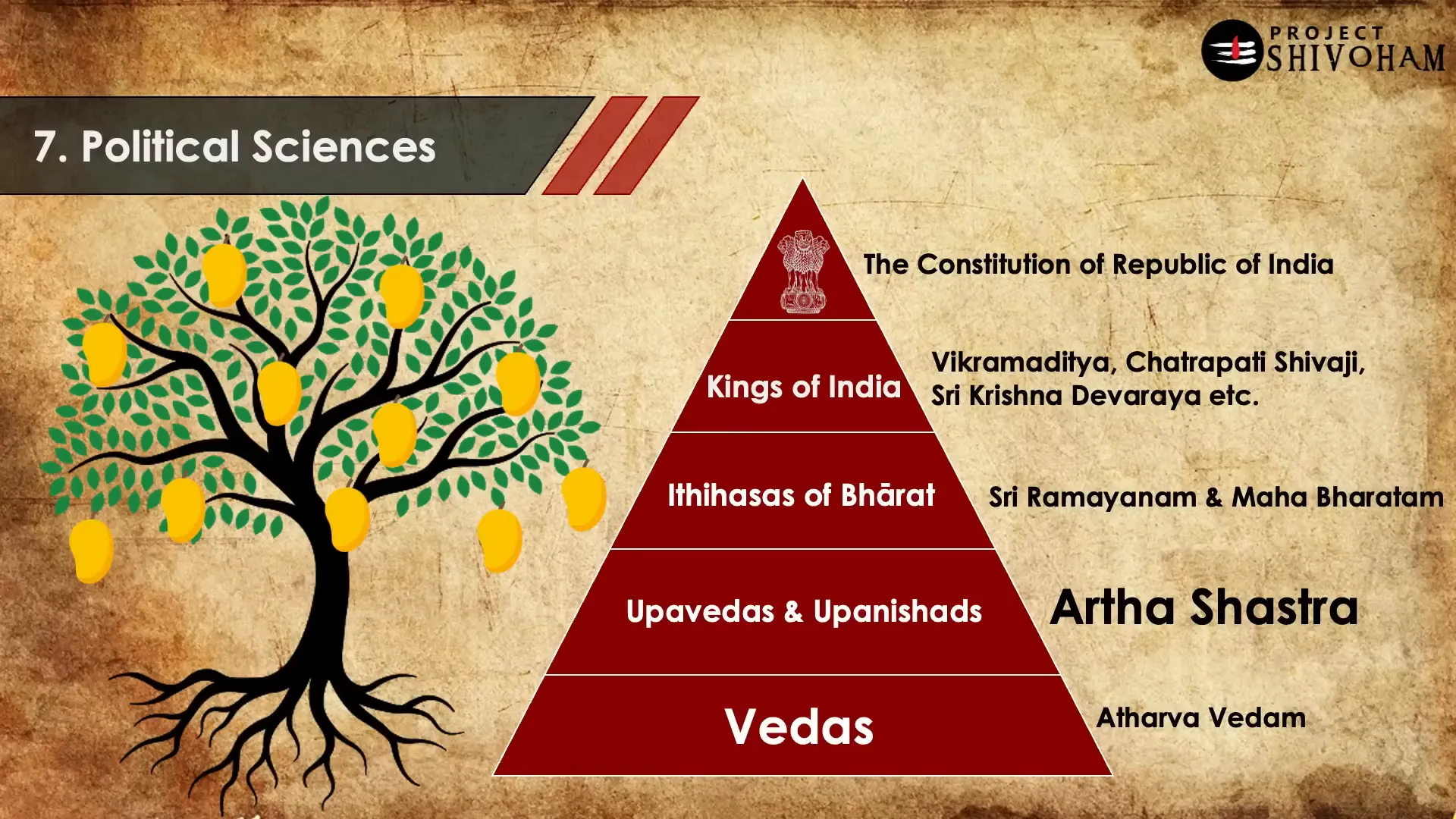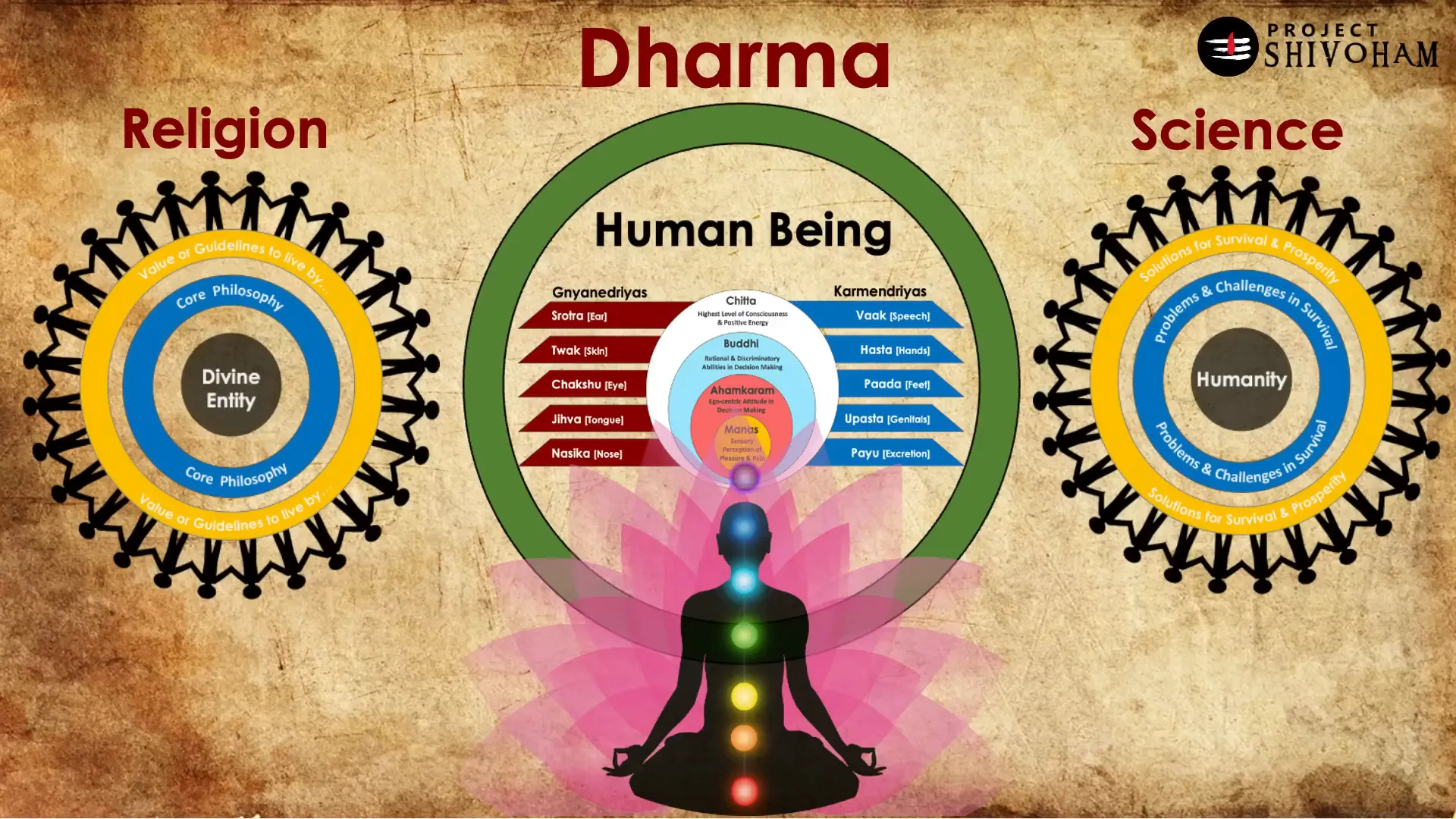This blog explores the intricate relationship between religion and science, particularly within the context of ancient Indian civilization. Contrary to common perceptions of conflict, Bharat showcases a rich heritage where both domains coexisted and complemented each other, fostering an environment of inquiry and understanding.
Table of Contents
- The Real Story of Religion vs. Science
- Origins of the word RELIGION
- YOGA: Realizing the relationship between You & the Nature around you with an 8 step approach
- NYAYA: A Theory of Logic, developed to explore every speck of this Universe with a deep Sense of rationale
- MIMAMSA: A critical approach towards understanding Human Life, the actions, the emotions etc. with an atheistic approach
- BOUDDHA: Realizing the mental suffering (Dukha) of humanity & attaining salvation (Nirvana)
- Pramana: Pra = Future or Outward Mong – Measurement 6 Pramanas
- Pratyaksha: Acquire Knowledge from ‘Self-Experience’
- Anumaana: Acquire Knowledge from ‘Logical Conclusion’
- Upamaana: Acquire Knowledge from ‘Examples or Similarities’
- Arthapatti: Acquire Knowledge from ‘Factual Extrapolation’
- Anupalabdi: Acquire Knowledge from ‘Negative Conclusion’
- Sabda: Acquire Knowledge from ‘Spoken & Written Words’
- The Complete Landscape of the Vedas: Rig Veda and Tajur Veda
- 1. Binary Number System
- Garbha Upanishad: The Vedic Biology on Pregnancy
- Gravity & Laws of Motion
- Combinatorics: Meru Prasthara aka Pascal’s Triangle
- Translations of Panchatantra: Sanskrit, India, -500 BCE
- FAQ
The Real Story of Religion vs. Science
The relationship between religion and science is often misrepresented. In many cultures, they are seen as oppositional forces. However, the reality is much more nuanced. In Bharat, religion and science have historically complemented each other, providing a holistic understanding of existence.
Religion offers emotional support and a sense of belonging, while science provides practical solutions to life’s challenges. The two can coexist, serving different yet essential roles in human life. This synergy can be seen in various ancient philosophies that emerged in Bharat, where the quest for knowledge was a spiritual endeavor.
Origins of the word RELIGION
The term ‘religion’ derives from the Latin word religare, which means to bind or join together. This concept of binding reflects the essence of religious practices, which unite individuals under shared beliefs and values.
Interestingly, this notion of connection is mirrored in the word ligament, the tissue that connects bones in the human body. Thus, both words emphasize the importance of relationships and connections, whether spiritual or physical.
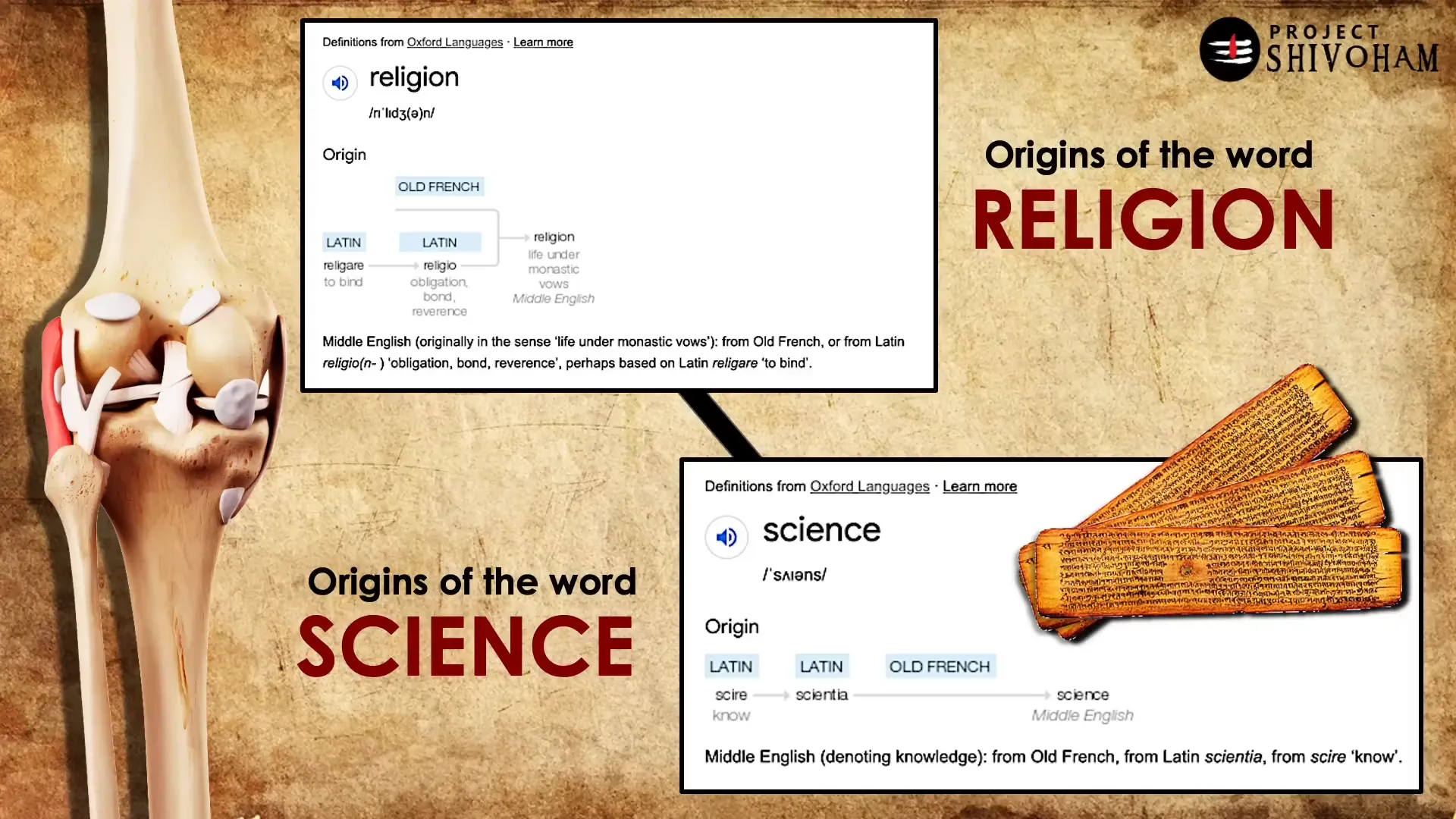
YOGA: Realizing the relationship between You & the Nature around you with an 8 step approach
Yoga transcends mere physical postures. It is a profound philosophy that seeks to establish a connection between the individual and the universe. Through an eight-fold path, yoga guides practitioners to understand their place in the cosmos.
This path includes ethical precepts, physical practices, breath control, and meditative techniques. Each step is designed to deepen awareness and foster a sense of unity with nature. Ultimately, yoga encourages individuals to recognize the cyclical relationship they share with the environment.
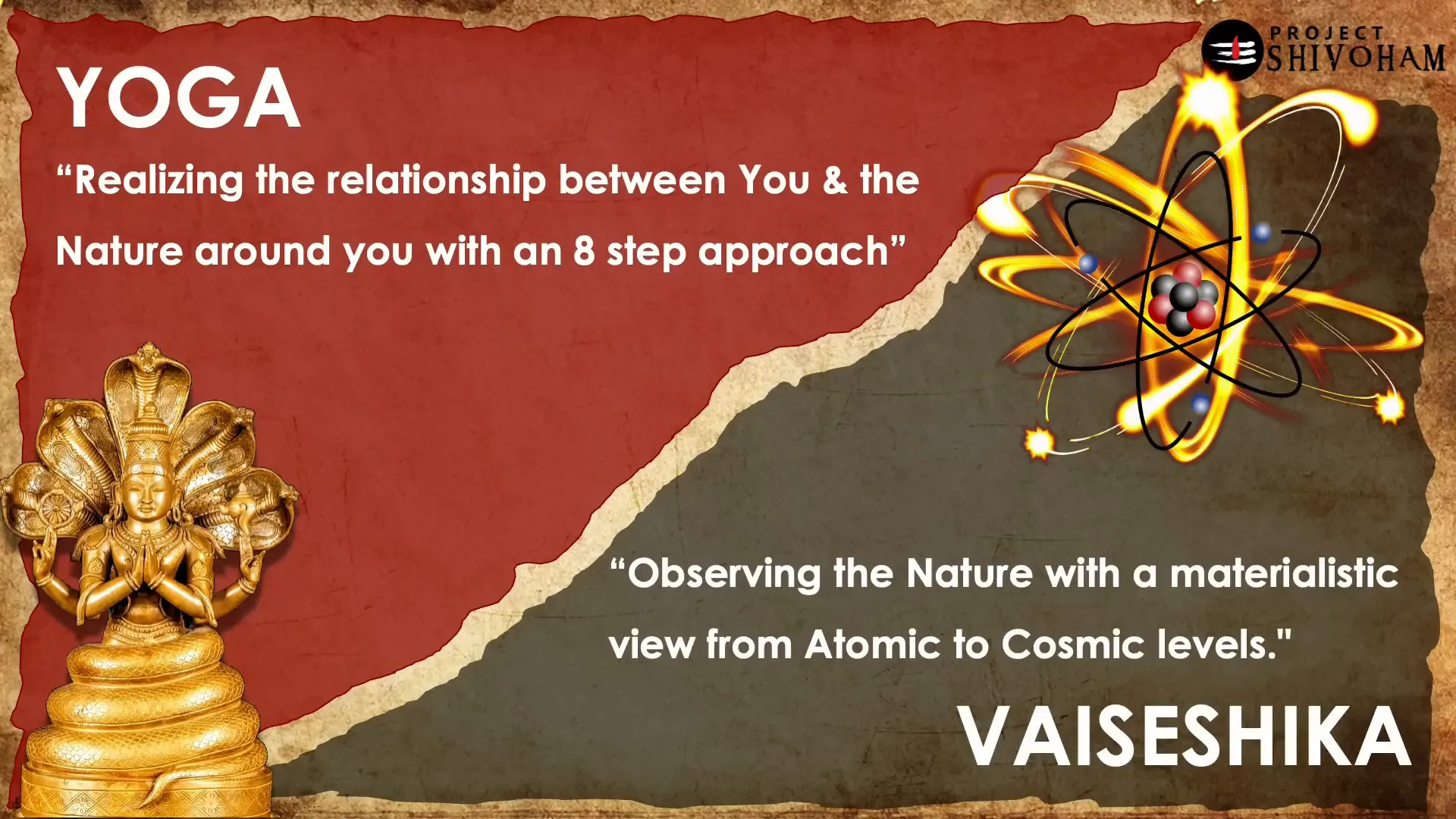
NYAYA: A Theory of Logic, developed to explore every speck of this Universe with a deep Sense of rationale
Nyaya, meaning ‘to judge’, is a school of thought that emphasizes logic and reasoning. It encourages critical thinking and rational analysis of the world around us. In Nyaya philosophy, knowledge is not simply accepted; it is scrutinized, debated, and validated.
This approach fosters a culture of inquiry, allowing individuals to draw conclusions based on evidence and sound reasoning. Nyaya serves as a tool for understanding the universe, promoting a rational exploration of existence without the necessity of a divine presence.
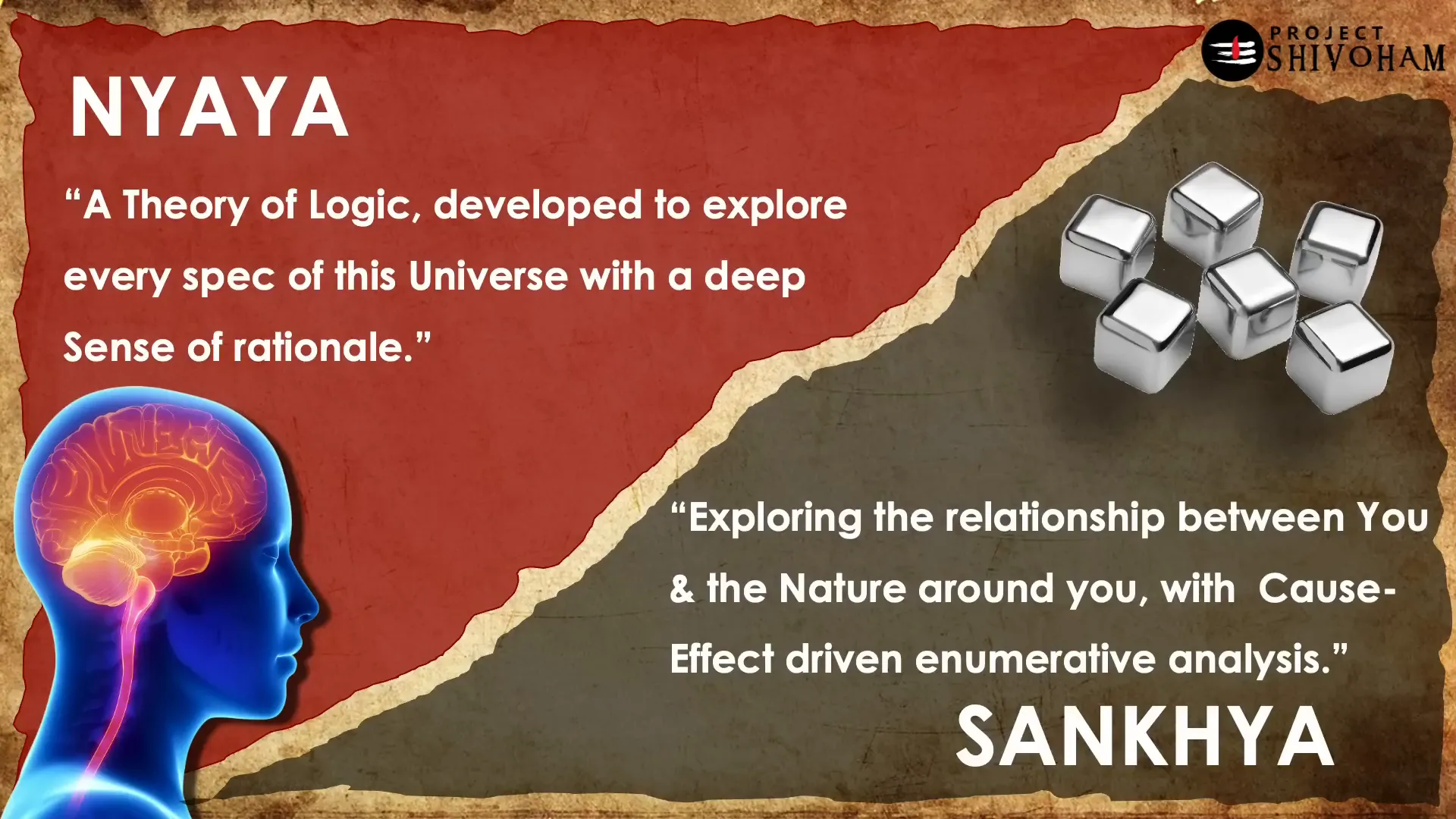
MIMAMSA: A critical approach towards understanding Human Life, the actions, the emotions etc. with an atheistic approach
Mimamsa is another essential school of thought in Bharat that focuses on critical inquiry into human actions and emotions. It emphasizes the importance of ethical behavior and the consequences of actions.
This philosophy encourages individuals to reflect on their decisions and the impact those decisions have on themselves and others. Mimamsa’s atheistic stance allows for a secular analysis of human behavior, promoting a deeper understanding of life without reliance on divine authority.
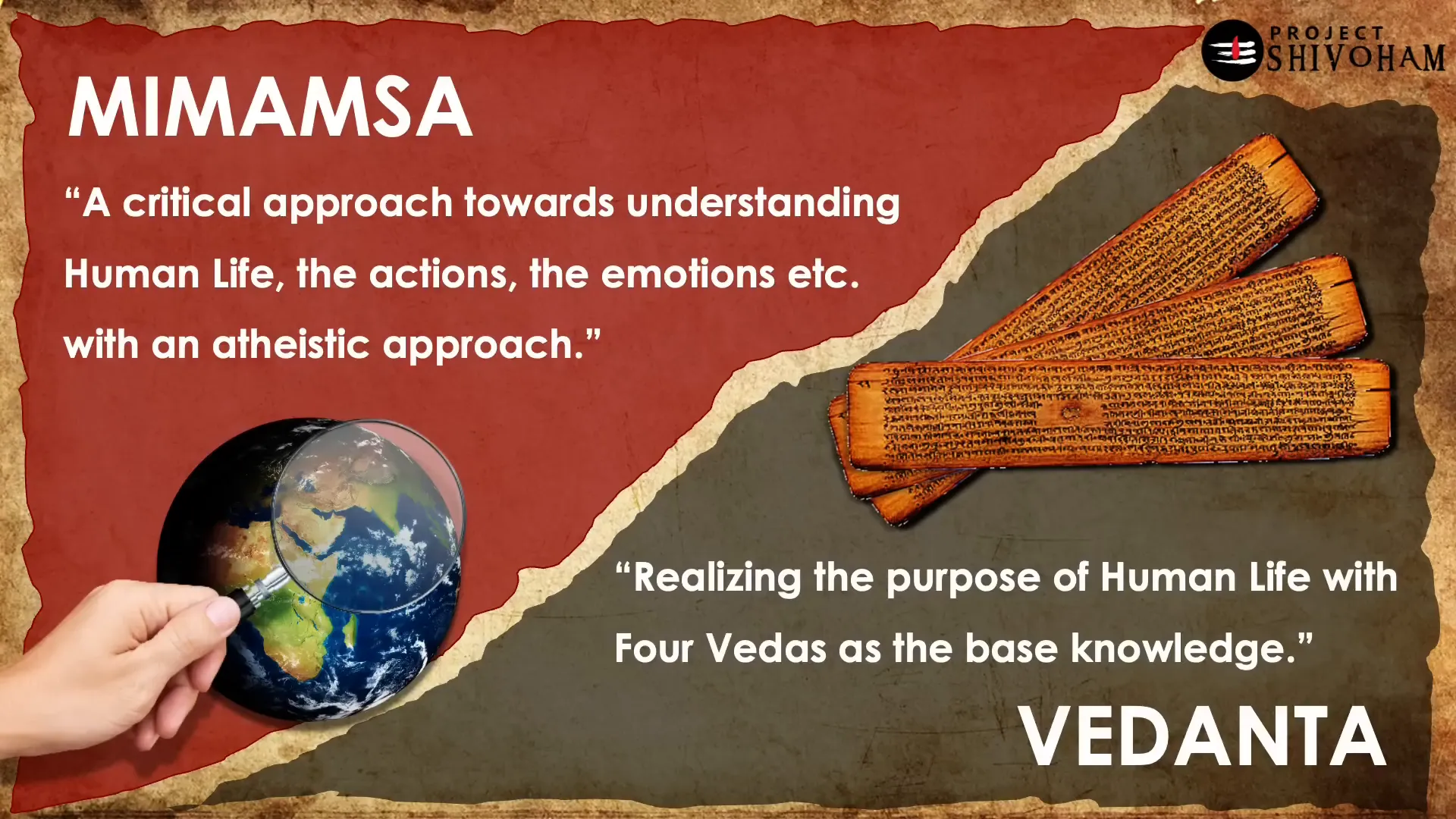
BOUDDHA: Realizing the mental suffering (Dukha) of humanity & attaining salvation (Nirvana)
Buddhism, or Bauddha dharma, offers profound insights into the nature of suffering and the path to liberation. Central to this philosophy is the concept of Dukha, which acknowledges the inherent suffering in life.
Through self-awareness and mindful practices, individuals can attain Nirvana, a state of liberation from suffering. This journey emphasizes personal responsibility and the importance of understanding one’s mind to achieve a higher state of existence.
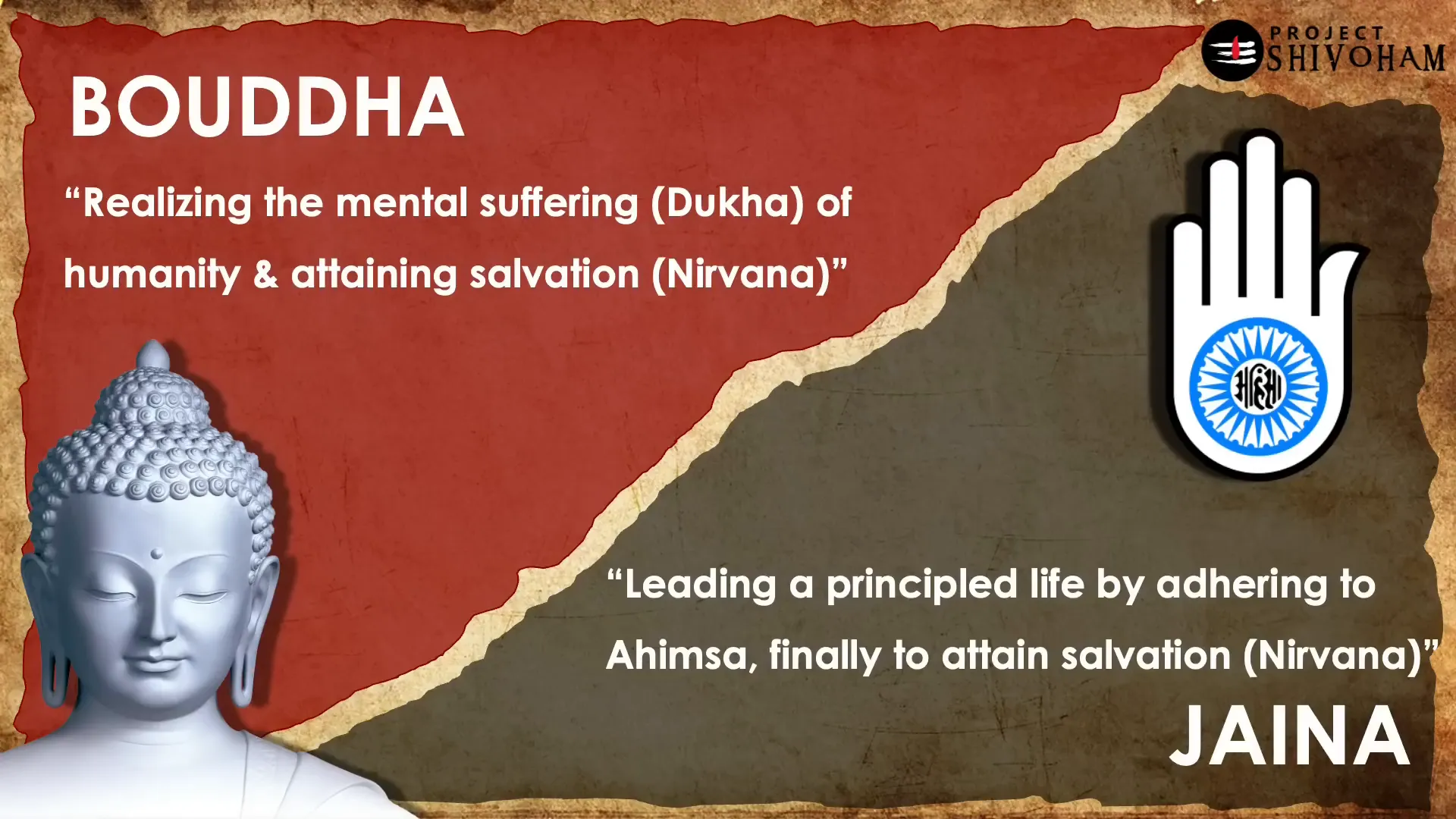
Pramana: Pra = Future or Outward Mong – Measurement 6 Pramanas
The concept of Pramana refers to the means of acquiring knowledge. It comprises six distinct methods: Pratyaksha (perception), Anumana (inference), Upamana (comparison), Ardhappati (postulation), Anupalabdhi (non-perception), and Sabdha (testimony).
These methods serve as tools for validating knowledge, ensuring that what we learn is authentic and reliable. Understanding these pramanas is crucial for anyone seeking to navigate the complexities of life and knowledge in a meaningful way.
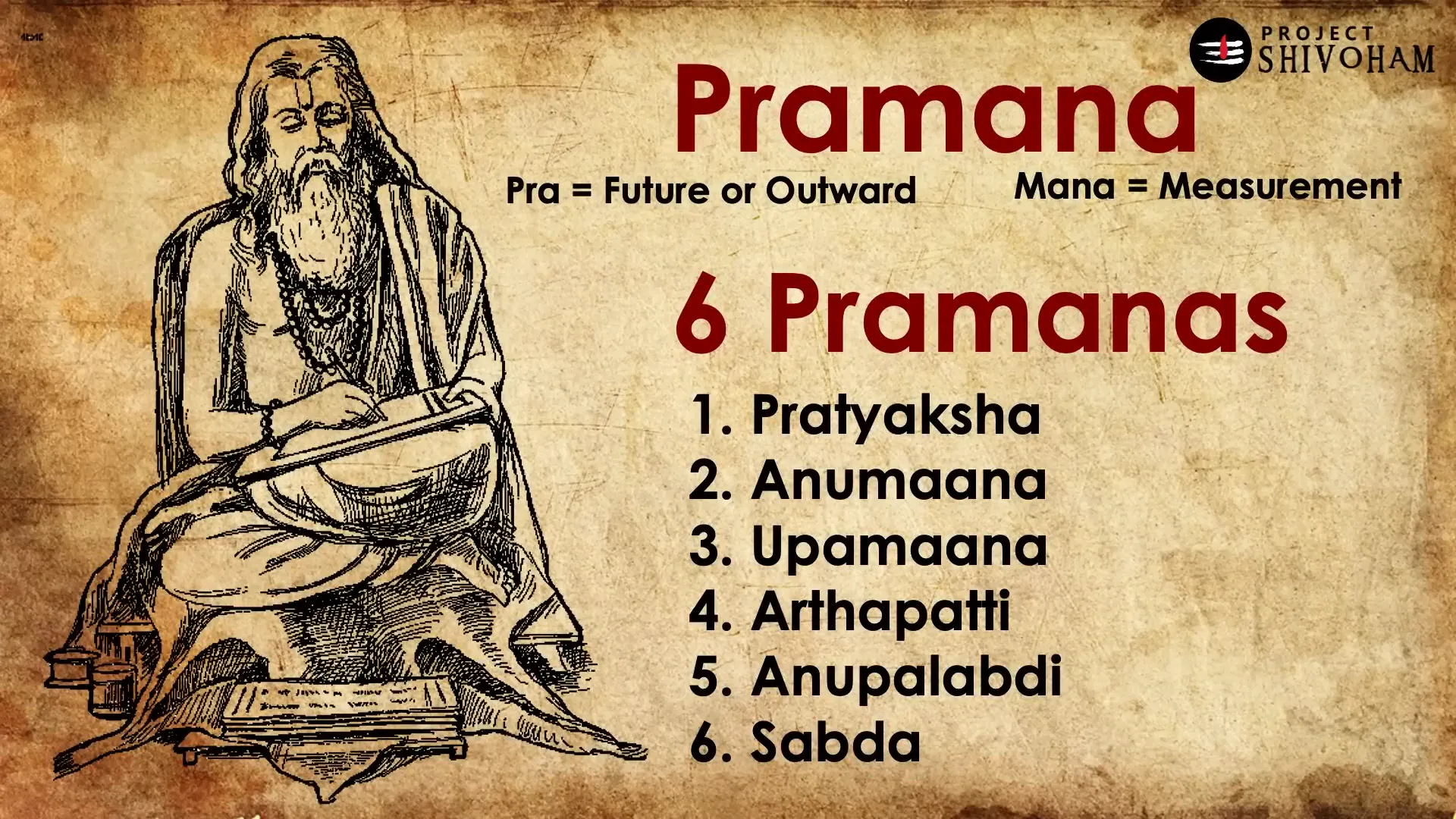
Pratyaksha: Acquire Knowledge from ‘Self-Experience’
Pratyaksha, or perception, is the first pramana. It emphasizes gaining knowledge through direct personal experience. Consider a child encountering fire for the first time. Upon touching a flame and getting burned, that child learns a crucial lesson about fire’s danger.
This experience becomes a lasting memory that shapes future behavior. The child will instinctively avoid flames, illustrating how practical experience can profoundly impact knowledge acquisition.
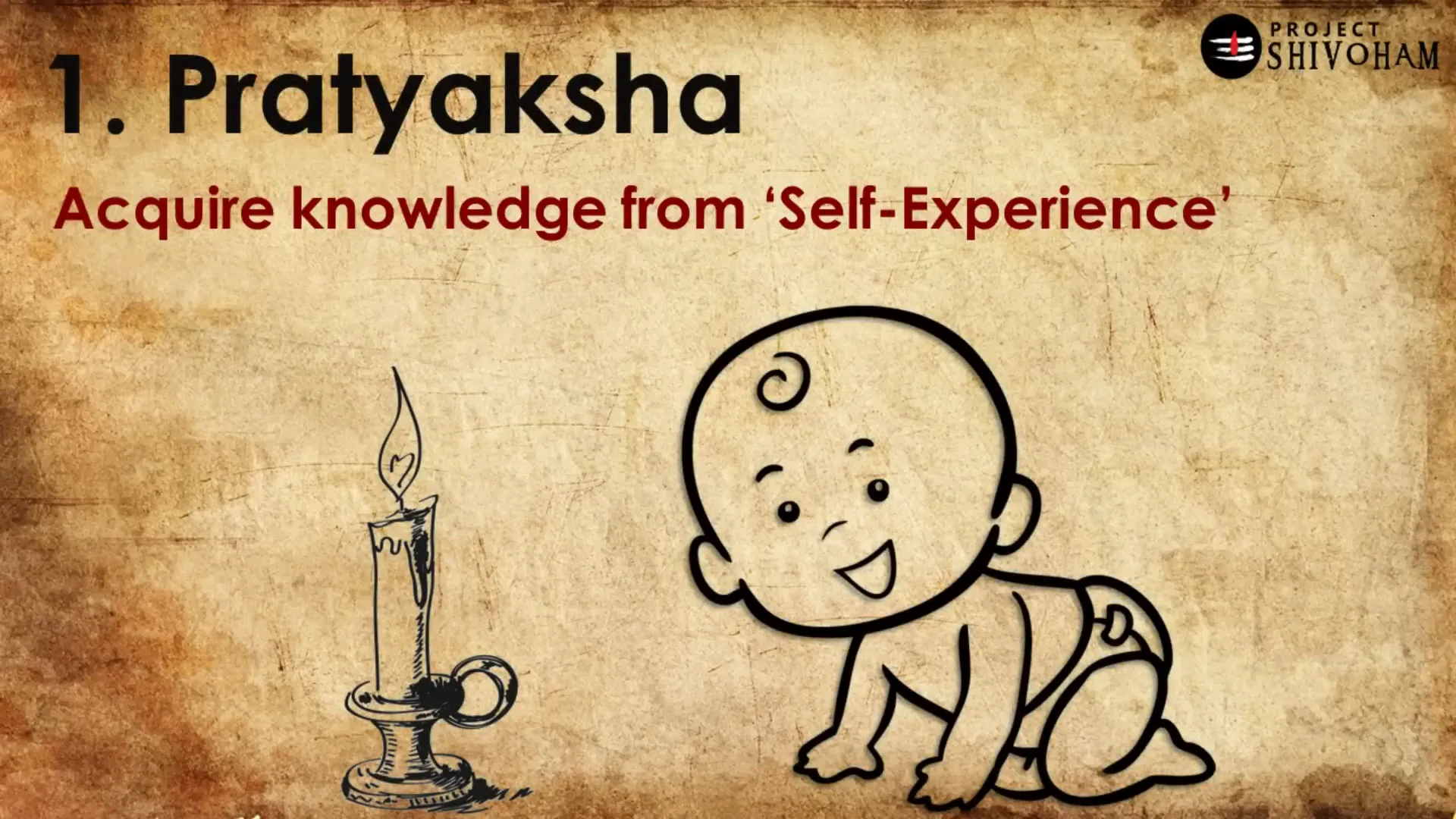
Anumaana: Acquire Knowledge from ‘Logical Conclusion’
The second pramana, Anumaana, refers to acquiring knowledge through logical reasoning. This method allows us to draw conclusions based on available evidence. For example, consider the positioning of a watch’s crown. Typically, it is placed on the right side.
One could logically deduce that since most people are right-handed, the watch is designed for ease of use when worn on the left wrist. Such reasoning showcases how we can arrive at conclusions even without direct evidence, simply by analyzing the context.
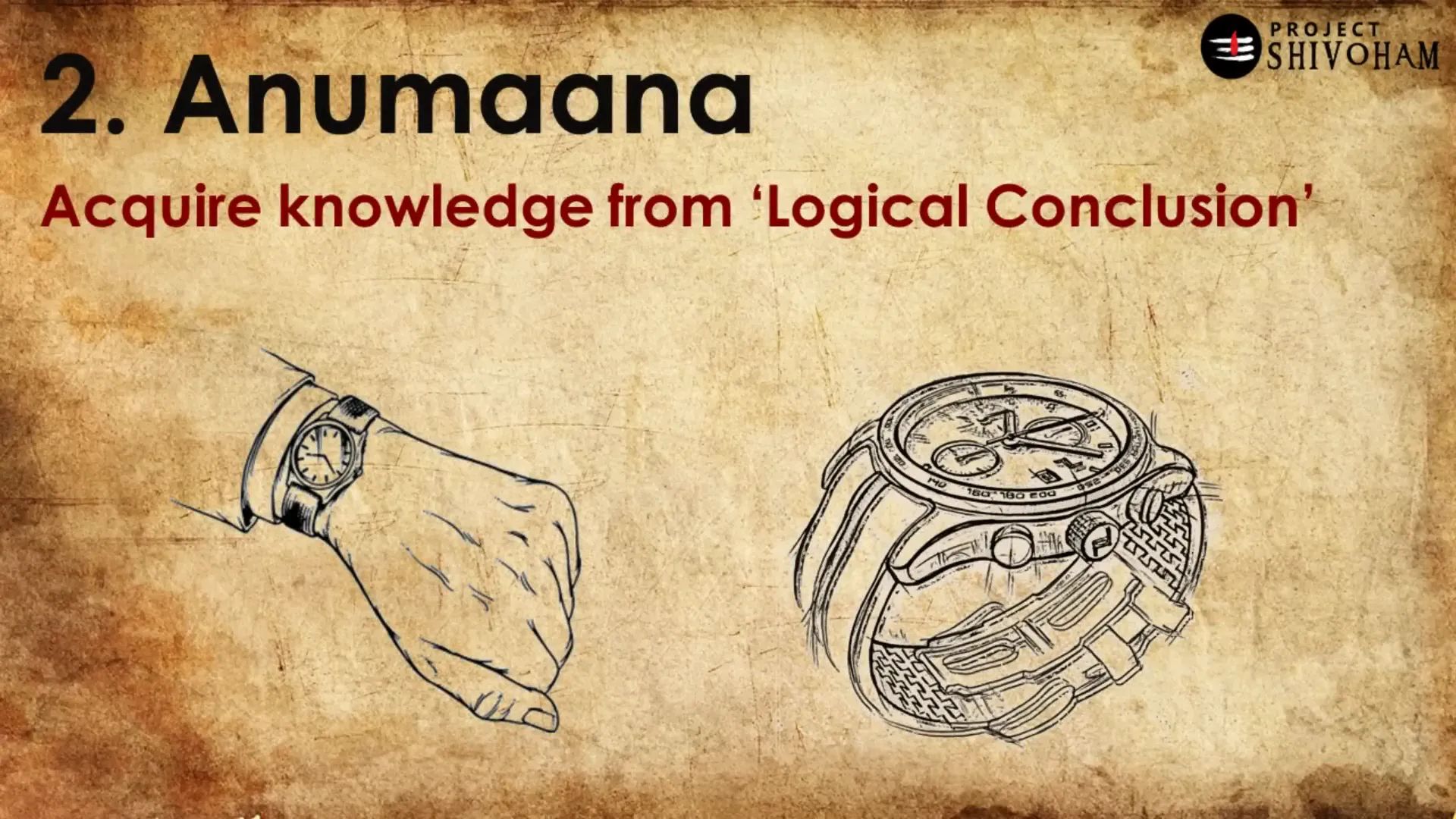
Upamaana: Acquire Knowledge from ‘Examples or Similarities’
Upamaana emphasizes learning through examples and similarities. When explaining complex concepts, relatable comparisons can enhance understanding. For instance, to illustrate how satellites orbit Earth, one might use the moon as an example.
By comparing the moon’s visible orbit to that of a satellite, the learner can grasp the concept more effectively. This method of drawing parallels allows for a deeper comprehension of subjects that may otherwise seem abstract.
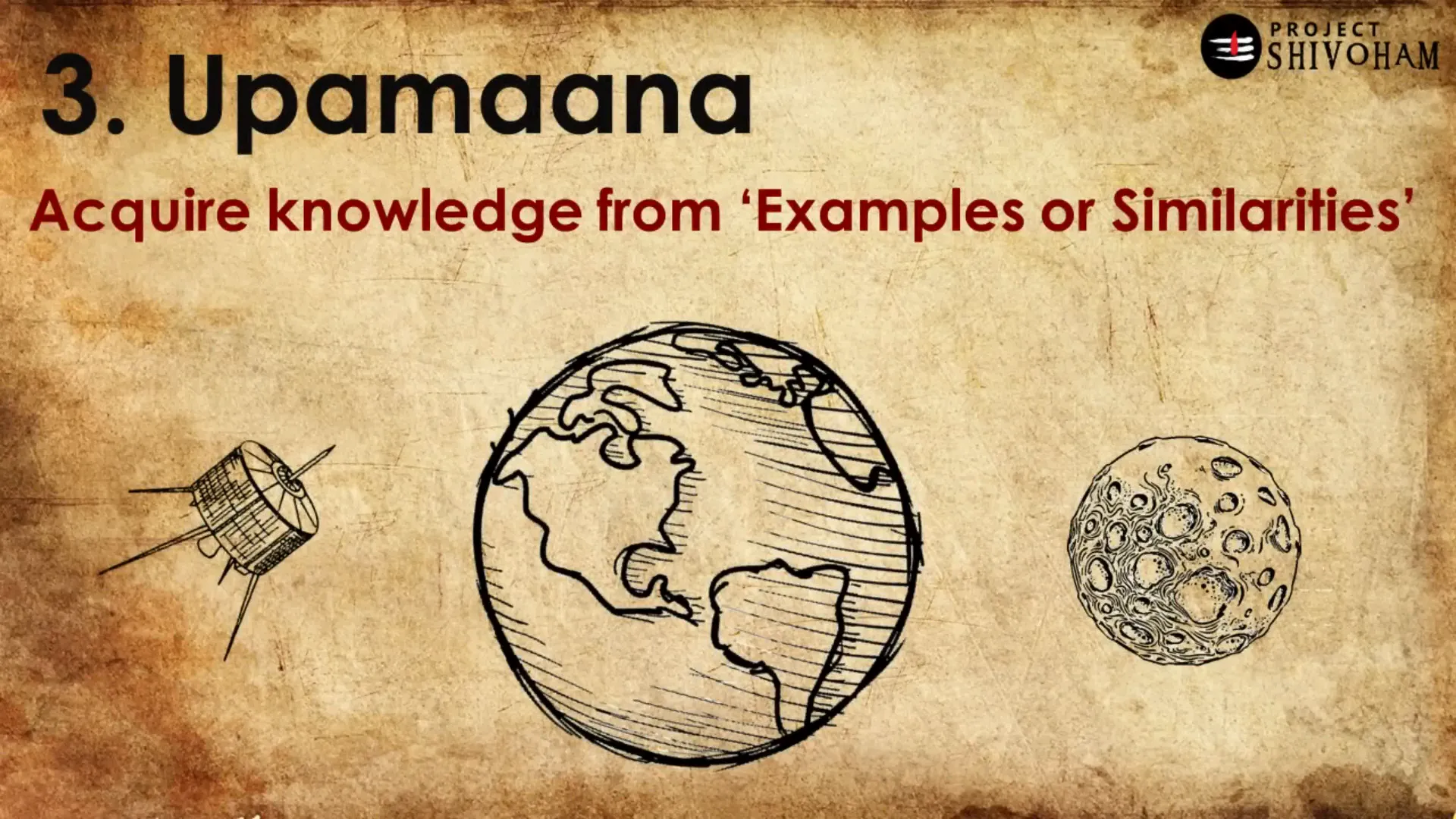
Arthapatti: Acquire Knowledge from ‘Factual Extrapolation’
Arthapatti, or factual extrapolation, involves deriving knowledge based on established facts. For instance, if dark clouds gather and the wind picks up, one might predict rain. This assumption is based on observable evidence—clouds and wind patterns.
By extrapolating from these facts, individuals can make reliable predictions about future events, showcasing the power of logical deduction in understanding the world.
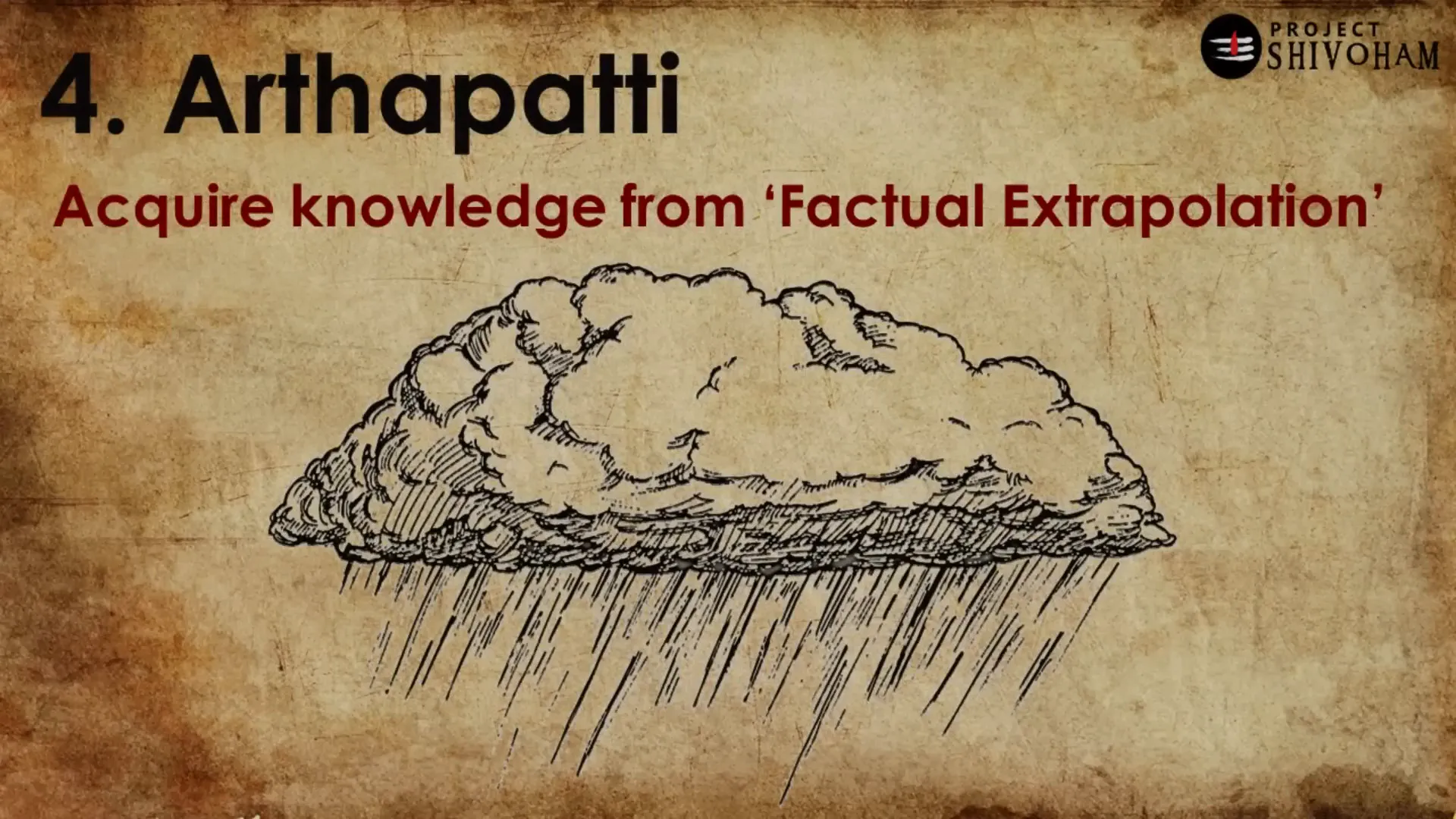
Anupalabdi: Acquire Knowledge from ‘Negative Conclusion’
Anupalabdi highlights the importance of understanding through the absence of evidence. This pramana encourages creative thinking by considering what does not exist. For example, imagining what antimatter looks like without any references challenges our cognitive abilities.
This method broadens our imagination and allows us to explore concepts beyond our immediate perception. By contemplating the unknown, we can develop a more comprehensive understanding of reality.
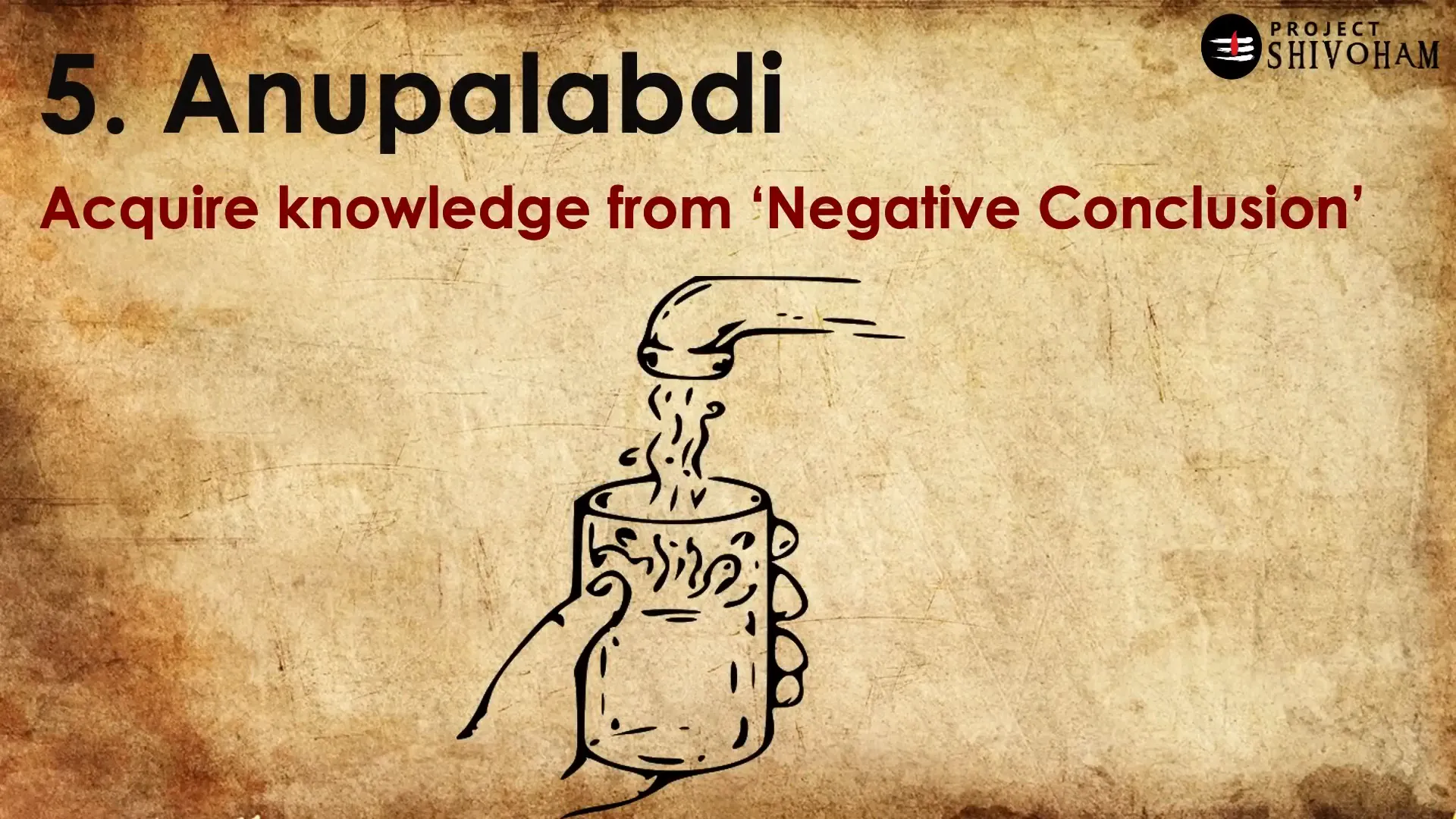
Sabda: Acquire Knowledge from ‘Spoken & Written Words’
Sabda refers to knowledge gained through spoken or written words. This traditional method encompasses the teachings we receive from parents, teachers, and literature. It forms the foundation of our education and understanding of the world.
From childhood, we accumulate knowledge through stories, discussions, and formal education. This pramana underscores the significance of language and communication in the learning process.
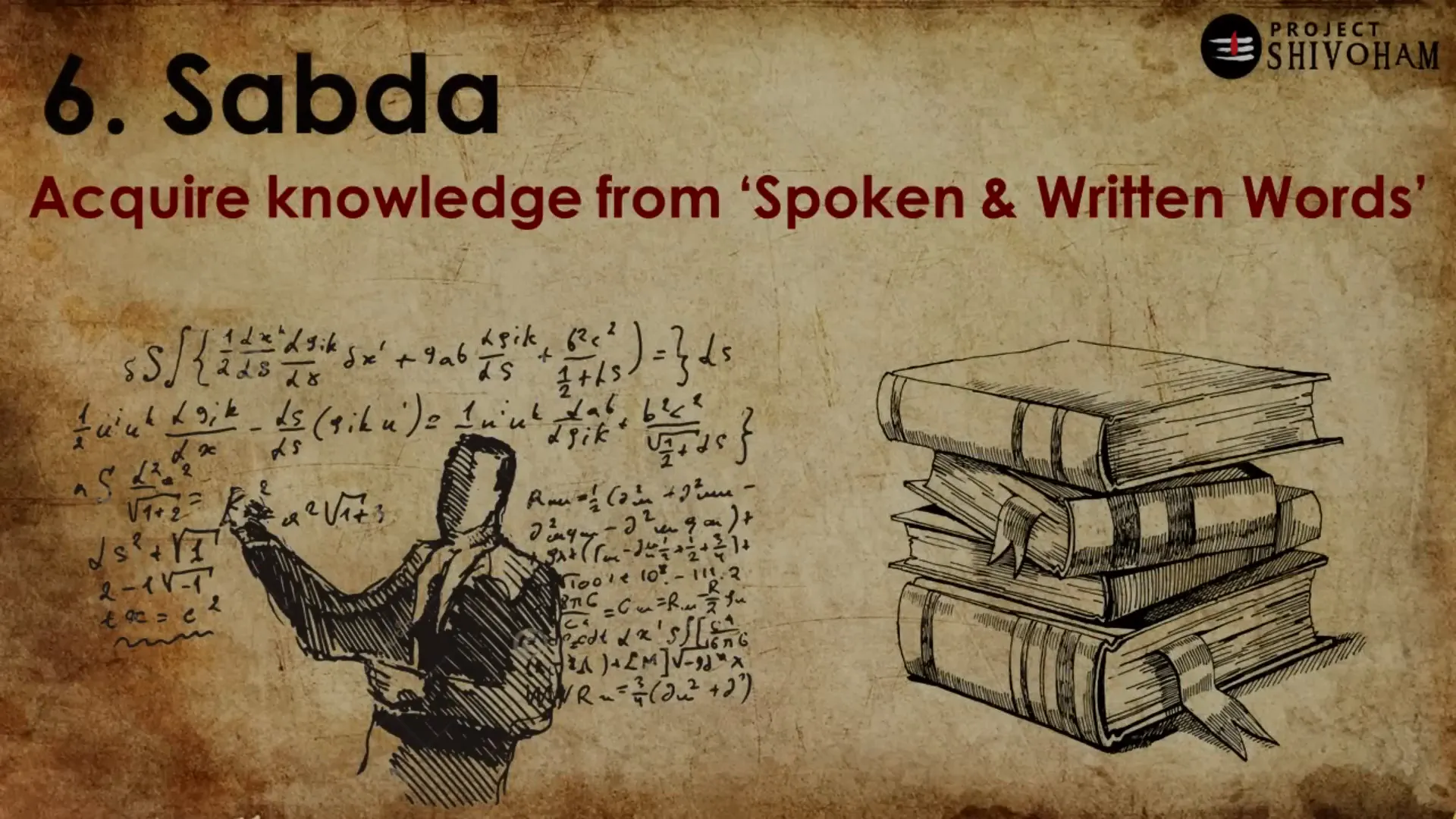
The Complete Landscape of the Vedas: Rig Veda and Yajur Veda
The Vedas are the cornerstone of ancient Indian knowledge systems. They consist of four primary texts: Rig Veda, Samaveda, Yajur Veda, and Atharva Veda. Each Veda serves a unique purpose, encompassing various aspects of life, knowledge, and spirituality.
Rig Veda, the oldest, is a collection of hymns that express profound philosophical inquiries and cosmic truths. It lays the groundwork for understanding the universe and our place within it.
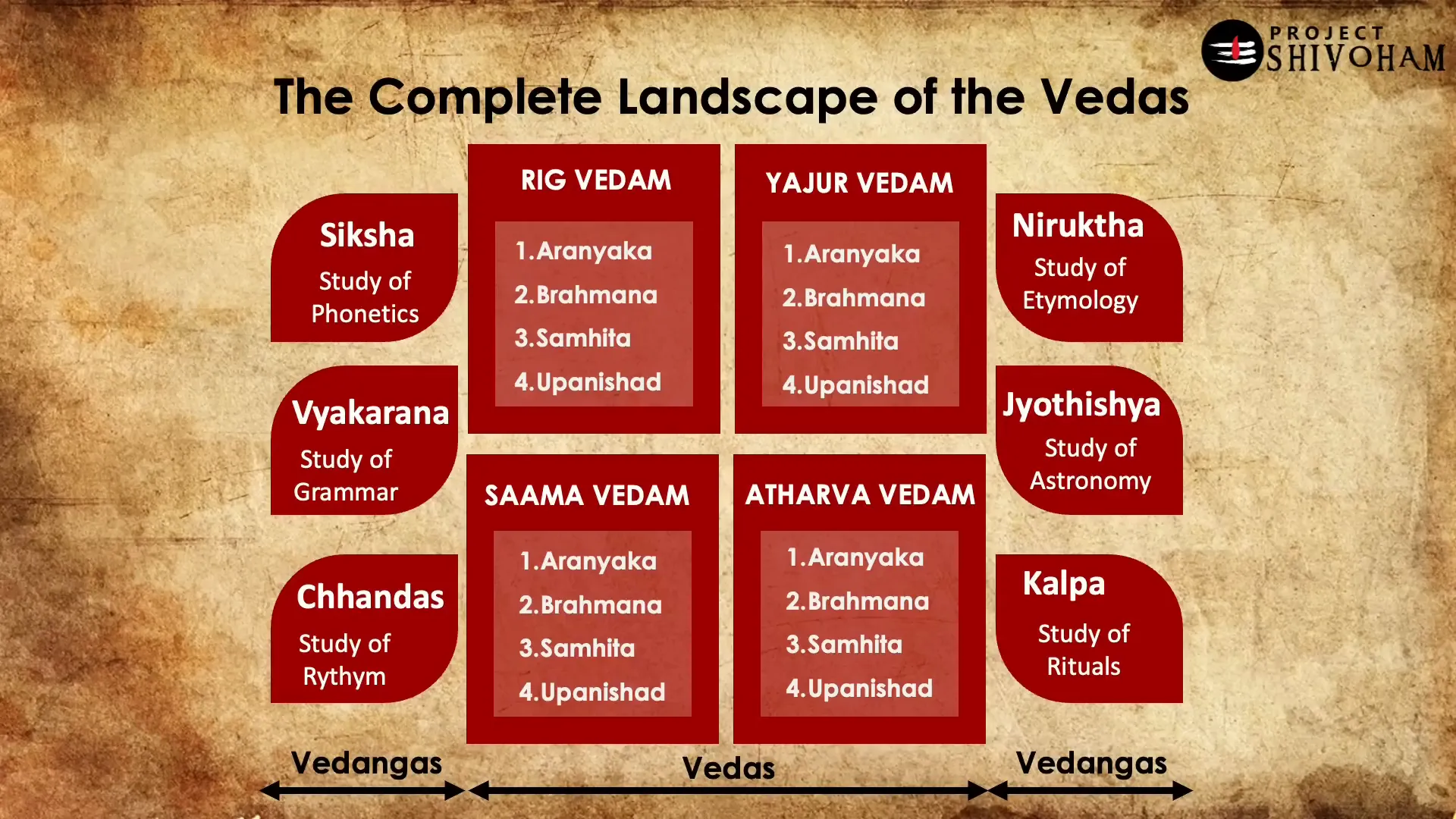
Yajur Veda, often associated with practical knowledge and rituals, complements the philosophical insights found in Rig Veda. Together, these texts provide a comprehensive framework for understanding existence, ethics, and the pursuit of knowledge.
By exploring these ancient texts, one can appreciate the rich intellectual heritage of Bharat, which continues to influence contemporary thought.
1. Binary Number System
The binary number system, a fundamental concept in modern computing, has its roots in ancient Bharat. This system, which uses only two digits—0 and 1—was meticulously documented in the Chandra Shastra, a Vedanga that supports the four Vedas. The algorithm for calculating combinations of syllables in Samskritam poetry, expressed through short and long syllables, is a testament to this ancient knowledge.
Pingalacharya, an ancient scholar, introduced a three-step algorithm for calculating powers of two, known as twika glau, miss raucha, prudhakla mishra. This innovation laid the groundwork for what we now recognize as binary mathematics. The profound understanding of combinations found in Chandra Shastra showcases how ancient Indian scholars were not only poets but also mathematicians.
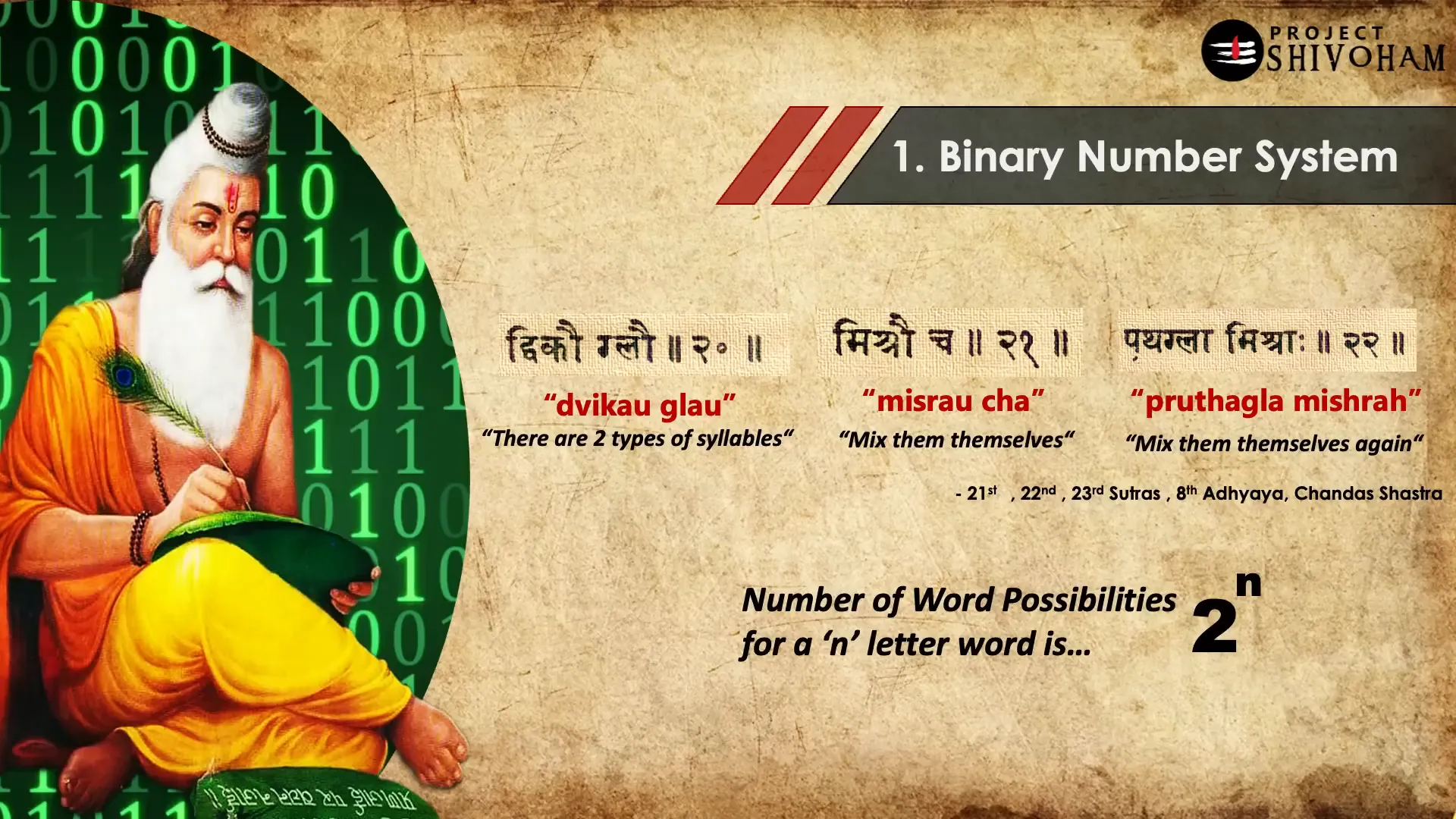
Garbha Upanishad: The Vedic Biology on Pregnancy
The Garbha Upanishad, part of the Adharma Veda, presents an astonishingly detailed account of human embryology. It describes the intricate stages of development from fertilization to birth, emphasizing the biological processes involved in creating life. This ancient text predates modern discoveries, illuminating concepts that scientists only began to understand centuries later.
The Upanishad elaborates on the journey of the embryo over nine months, detailing the physiological transformations that occur. The depth of knowledge in the Garbha Upanishad reflects a sophisticated understanding of biology, making it a remarkable contribution to both science and spirituality.

Gravity & Laws of Motion
Maharishi Kanada’s Vaisesika Darshanam is one of the earliest texts to discuss gravitational forces. Kanada observed natural phenomena and formulated laws that described motion, including the concepts of upward and downward forces. This foundational work predates Newton’s laws by centuries, illustrating that the understanding of gravity and motion was not a Western invention.
In Vaisesika philosophy, the upward movement, termed ukshepa naam, is countered by the gurutva or gravitational force. This duality of forces presents a comprehensive view of motion that aligns remarkably with contemporary physics. This ancient insight emphasizes the continuity of knowledge that spans generations.
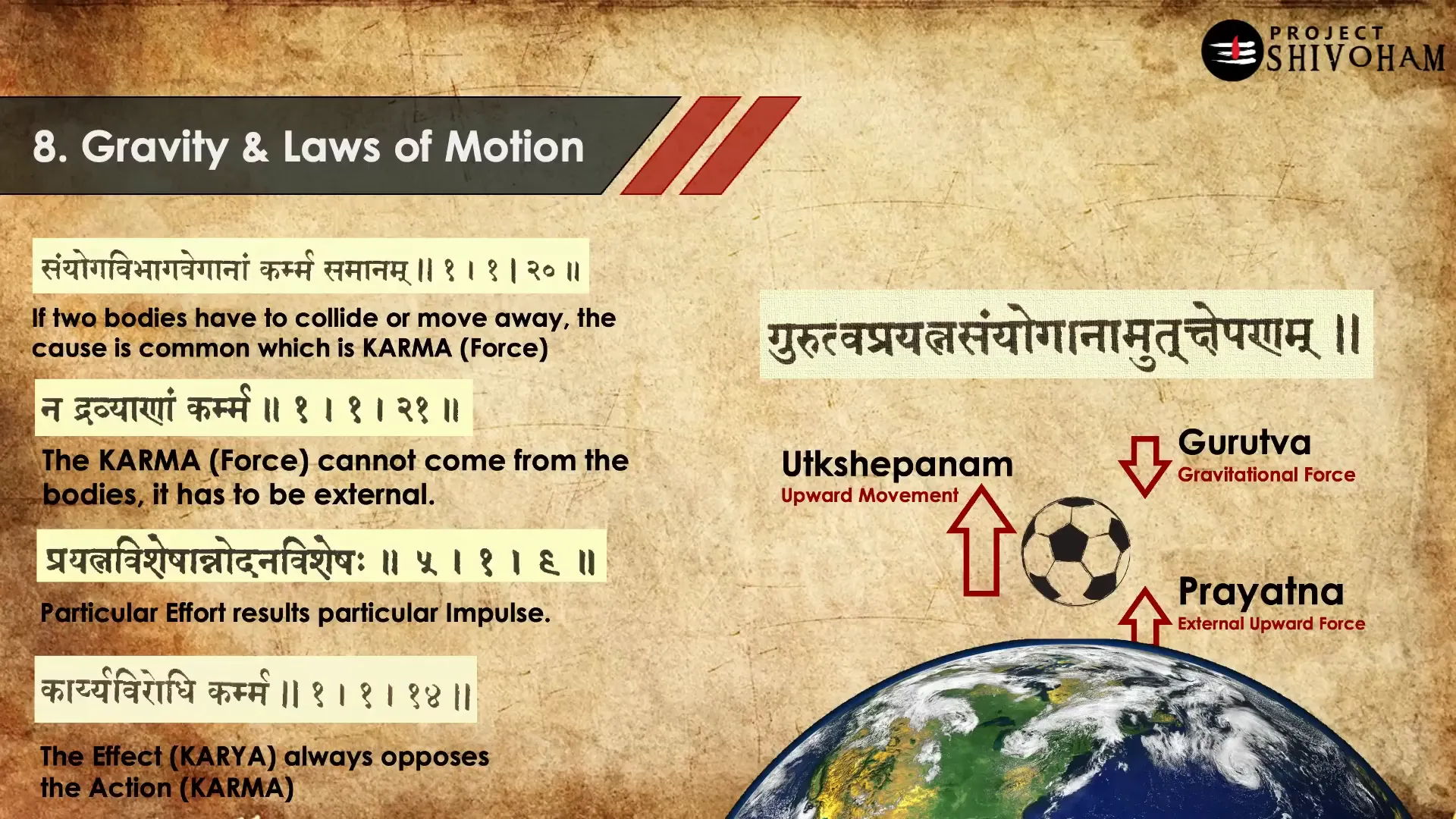
Combinatorics: Meru Prasthara aka Pascal’s Triangle
Combinatorics, the branch of mathematics dealing with counting, permutations, and combinations, finds its origins in Bharat. This field was developed through the Chandra Shastra, specifically by Pingalacharya, who articulated techniques to construct Samskritam poetry. His work, known as Meruprasthara, is often compared to Pascal’s Triangle, which emerged in Europe centuries later.
Interestingly, Meruprasthara was translated by notable mathematicians such as Omar Khayyum and Niccolo Tartaglia, demonstrating its far-reaching influence. The concept of counting and organizing numbers is not merely a mathematical exercise but is deeply embedded in the cultural and intellectual fabric of ancient Bharat.
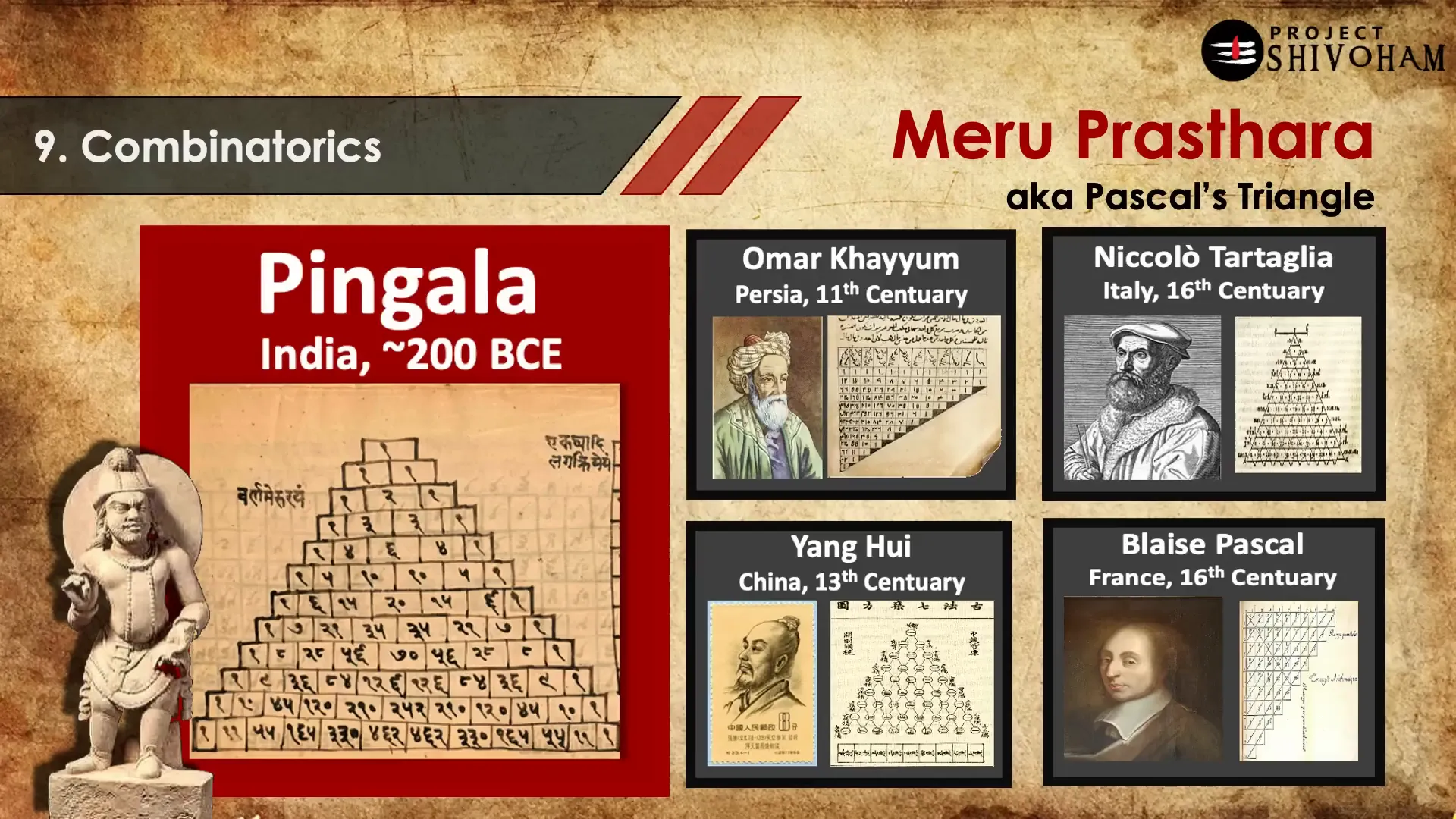
Translations of Panchatantra: Sanskrit, India, -500 BCE
The Panchatantra, a collection of ancient Indian fables, has traveled through time and cultures, influencing storytelling across the globe. Originally composed in Sanskrit around 500 BCE, its moral tales have been translated into numerous languages, illustrating the universal themes of wisdom and ethics.
The Panchatantra’s journey from Bharat to West Asia and Europe marks a significant exchange of knowledge and culture. Its narratives, rich with lessons about human behavior, governance, and morality, continue to resonate, proving that the wisdom of ancient texts transcends time and geography.
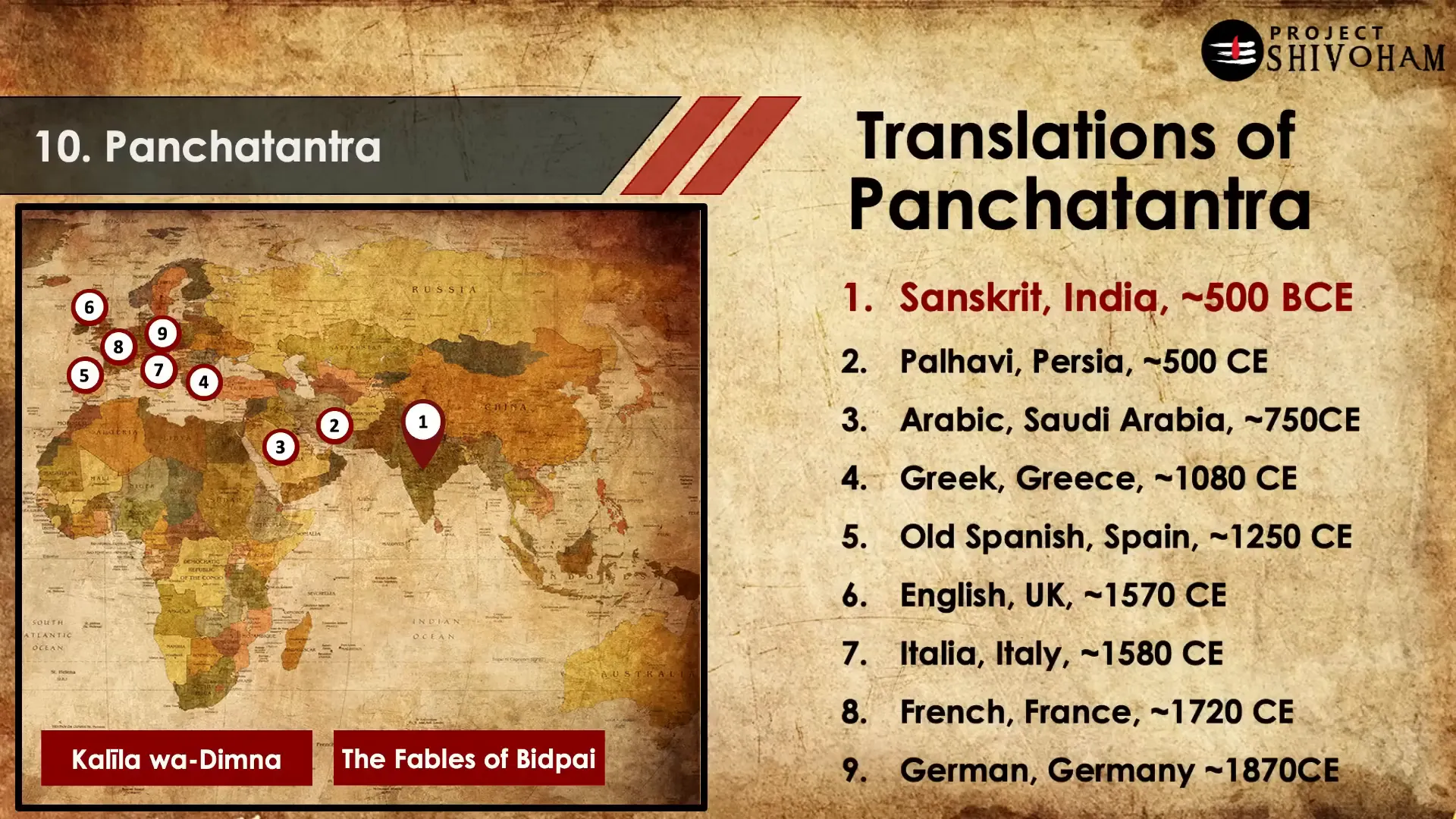
FAQ
What is the significance of the binary number system in ancient Bharat?
The binary number system, as documented in the Chandra Shastra, showcases the mathematical prowess of ancient Indian scholars. It laid the foundation for modern computing and illustrates the sophistication of Vedic mathematics.
How does the Garbha Upanishad contribute to our understanding of biology?
The Garbha Upanishad provides detailed insights into human embryology, describing the stages of development from fertilization to birth. This ancient text predates modern scientific discoveries, offering a profound understanding of biological processes.
What are the contributions of Maharishi Kanada to physics?
Maharishi Kanada’s Vaisesika Darshanam explores the concepts of gravity and motion. His formulations regarding gravitational forces and laws of motion predate similar discoveries in Western science, highlighting the advanced understanding of physical principles in ancient Bharat.
How did the Panchatantra influence global storytelling?
The Panchatantra’s moral tales have been translated into multiple languages, influencing literature and storytelling worldwide. Its themes of wisdom and human behavior are universal, allowing it to resonate with diverse cultures.
